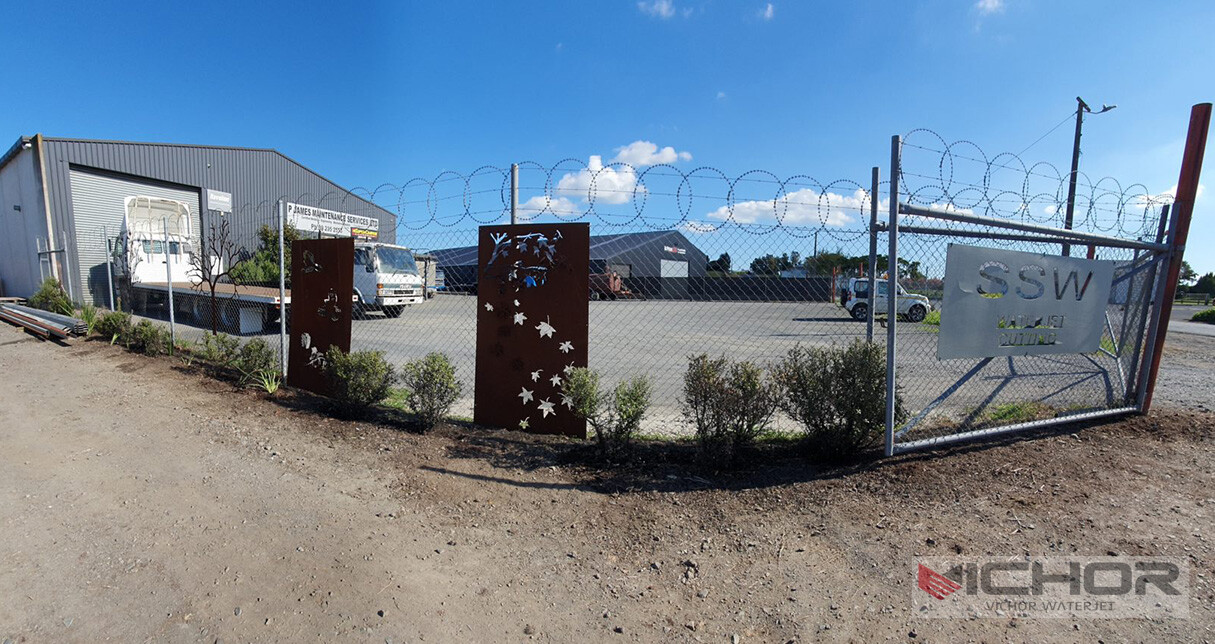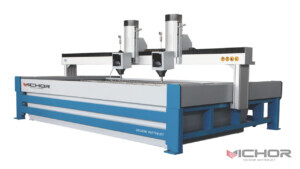
Water Jet Laser Cutting Machine Price: 5 Critical Factors Shaping Your Investment
The quest for precise, versatile, and powerful cutting solutions often leads manufacturers and fabricators to explore technologies like waterjet and laser cutting. While water jet laser cutting machine price is a common search term, it’s crucial to understand that “water jet laser” typically refers to two distinct technologies: abrasive waterjet cutting and laser cutting. A single machine combining both core principles (using a laser within a high-pressure water stream as the primary cutting beam) isn’t commercially dominant. However, the search intent clearly revolves around understanding the cost of these advanced cutting systems. This article dives deep into the water jet laser cutting machine price landscape, examining the five key factors that significantly influence the investment required.
Understanding the Technologies (And Why “Water Jet Laser” Can Be Confusing)
Before dissecting price, clarifying the technologies is essential:
Abrasive Waterjet Cutting: Utilizes an ultra-high-pressure stream of water (often 60,000 PSI or higher) mixed with fine garnet abrasive. This slurry erodes through virtually any material – metal, stone, glass, composites, rubber, foam – with no heat-affected zone (HAZ). It excels in cutting thick materials and heat-sensitive substances.
Laser Cutting: Employs a highly focused beam of light (CO2, Fiber, or Disk laser) to melt, burn, or vaporize material. It offers extremely high precision and speed, especially on thin to medium-thickness metals and some non-metals. Fiber lasers dominate metal cutting due to their efficiency.
The term “water jet laser” often arises because:
Some systems integrate waterjet cutting heads alongside laser cutting heads on a single multi-process machine platform (though they operate independently).
Waterjet is sometimes used after laser cutting to cool parts or clean slag.
Water can be used in laser cutting as an assist gas or for cooling nozzles, but it’s not the primary cutting mechanism like in pure waterjet.
Therefore, when searching for water jet laser cutting machine price, users are likely seeking information on the cost of either technology, or potentially a combination machine. This article addresses the pricing factors for both core technologies and the concept of hybrid platforms.
Factor 1: Core Technology Type and Power Source
The fundamental choice between waterjet and laser is the primary price driver, heavily influenced by the power source:
Abrasive Waterjet Systems:
Pump Power & Pressure: The heart is the ultra-high-pressure pump (intensifier pump or direct drive). Higher pressure (e.g., 60k, 90k, 100k+ PSI) and higher horsepower (e.g., 30HP, 50HP, 100HP) significantly increase cutting speed and capability, especially on thick, hard materials. Price Impact: A 30HP pump might start around $100,000-$150,000 for the pump alone, while 100HP+ systems can exceed $300,000 just for the pump package. Expect a complete entry-level 5x10ft table with 30HP pump to start around $200,000-$300,000. High-pressure (90k-100k PSI) systems command a substantial premium.
Abrasive System: Cost includes the delivery system and the ongoing cost of garnet abrasive.
Laser Cutting Systems:
Laser Source Type & Power: Fiber lasers are the standard for metal cutting. Power is measured in Watts (W) or Kilowatts (kW). Price Impact: A 1-2 kW fiber laser system might start around $150,000-$250,000. Prices escalate rapidly with power: 4-6 kW systems often range from $300,000-$500,000+, and high-power 10-20kW+ machines can reach $1 million or more. CO2 lasers are generally less expensive than fiber lasers of comparable power but are less efficient for metals and more expensive to operate.
Laser Resonator Quality: Premium brands (IPG, SPI, nLIGHT, TRUMPF) command higher prices than generic sources.
Factor 2: Machine Size, Configuration, and Table Type
The physical size and build of the cutting machine directly impact the water jet laser cutting machine price:
Cutting Envelope (Table Size): The X-Y cutting area (e.g., 4×4 ft, 5×10 ft, 6×12 ft, 10×20 ft, larger) determines the maximum sheet size or part dimension. Larger tables require more structural material, longer linear drives, and more complex control systems. Price Impact: Moving from a 4×4 ft to a 5×10 ft table can add $50,000-$100,000+ to the base price. Very large custom tables are exponentially more expensive.
Z-Axis Height & Cutting Head: Determines the maximum material thickness capability. Waterjets require more Z-height than lasers for thicker materials. Advanced height sensing systems (capacitive, optical) add cost.
Table Structure: Basic slat tables are standard. Downdraft tables (for dust/fume extraction on lasers or mist control on waterjets) add cost. Waterjet tables need robust structures to handle the high forces and water. Titanium or specialized composite slats for waterjets are pricier than steel slats for lasers.
Motion System: Precision linear guides, rack-and-pinion vs. ball screw drives, servo motor quality, and overall rigidity significantly affect accuracy, speed, longevity, and price. High-speed, high-acceleration systems cost more.
Multi-Head Capability (Waterjet): Some waterjet systems can accommodate multiple cutting heads on one gantry, boosting productivity. This adds complexity and cost.
Hybrid Systems: Machines combining a waterjet head and a laser head on the same gantry represent the true “water jet laser” concept. These are highly complex, custom-engineered solutions. Price Impact: Expect hybrid systems to start well above $500,000 and easily reach $1 million or more, depending on size and laser power.
Factor 3: Brand Reputation, Quality, and Origin
Manufacturer reputation, build quality, reliability, and support infrastructure are major price differentiators:
Premium Brands (Laser): TRUMPF, Bystronic, Amada, Mazak, Prima Power (typically associated with high-power fiber lasers). Known for exceptional engineering, reliability, advanced software, automation integration, and global support. Price Impact: Command the highest prices, often 20-40%+ more than mid-range or entry-level brands for comparable specifications.
Premium Brands (Waterjet): Flow International (the pioneer and market leader), OMAX (known for advanced software and pump tech), KMT. Offer robust pumps, precise motion systems, and mature software.

Mid-Range Brands: Numerous manufacturers (e.g., for lasers: Mitsubishi, Han’s Laser, Trotec; for waterjets: Jet Edge, WARDJet, Resato). Offer good performance and reliability, often with competitive pricing and strong regional support.
Entry-Level/Economy Brands: Primarily from China and other Asian manufacturers. Can offer significantly lower upfront water jet laser cutting machine price. Trade-offs: Potential concerns about long-term reliability, component quality, software sophistication, service response time, and resale value. Warranties may be shorter or less comprehensive.
Country of Origin: Machines built in Europe, North America, or Japan generally carry a price premium over those manufactured in regions with lower labor costs, reflecting differences in labor rates, material standards, and regulatory compliance.
Factor 4: Automation, Software, and Control Systems
The level of automation and sophistication of the software suite dramatically influences functionality and price:
Basic CNC Control: Entry-level machines have simpler controls sufficient for basic cutting tasks.
Advanced CAD/CAM Software: Premium machines come with highly sophisticated, often proprietary, software. Features include:
Advanced nesting algorithms to minimize material waste.
Simulation and collision detection.
Automatic kerf compensation (critical for both techs).
Taper compensation (vital for waterjet cutting thick material).
Intuitive interfaces and workflow management.
(Laser) Piercing strategies, gas control optimization.
(Waterjet) Abrasive metering control, cutting head oscillation control. Price Impact: Advanced software packages can add tens of thousands of dollars to the system cost but significantly boost productivity and ease of use.
Material Handling Automation:
Loading/Unloading: Simple lift tables vs. automated loading arms vs. full robotic loaders/unloaders. Price Impact: Automation adds $50,000 to several hundred thousand dollars.
Forklift vs. Conveyor Systems: Integrated conveyors for part removal add cost.
Pallet Changers: Allow loading one pallet while cutting another, maximizing uptime. A significant investment.
Monitoring & Connectivity: IoT capabilities, remote diagnostics, and production monitoring systems add to the price.
Factor 5: Operating Costs and Consumables
The true water jet laser cutting machine price extends far beyond the initial purchase. Ongoing operational expenses are substantial and differ significantly:
Abrasive Waterjet:
Abrasive (Garnet Sand): The largest consumable cost. Usage depends on material, thickness, and cut quality. Costs can range from $0.10 to $0.50+ per minute of cutting time, translating to thousands of dollars per month for busy shops.
Water: Requires filtration and deionization/purification systems to protect the pump and nozzle. Water treatment costs and disposal fees add up.
Nozzles & Orifices: Tungsten carbide mixing tubes and sapphire/ruby/diamond orifices wear out and need regular replacement (every 10-100+ hours depending on pressure and abrasion). Costs per set range from $50 to $300+.
High-Pressure Seals & Valves: Require periodic maintenance and replacement.
Pump Maintenance: Regular fluid changes and component inspection/overhaul are necessary.
Electricity: High-pressure pumps are significant energy consumers, though generally less than high-power lasers per hour of cutting.
Laser Cutting:
Electricity: High-power lasers (especially 4kW+) consume massive amounts of electricity, often the single largest operating cost. Power consumption scales directly with laser power.
Assist Gases: Oxygen, Nitrogen, and sometimes air are essential. High-purity Nitrogen (for stainless/alu cutting) is a major consumable cost. Usage is high pressure and high volume. Costs vary greatly by region and volume.
Laser Consumables: Focusing lenses, protective windows, nozzles require regular cleaning and replacement (especially when cutting reflective materials).
Cutting Bed Consumables: Slats wear out and need replacement.
Cooling System: Chillers require maintenance and electricity.
Fume Extraction: Requires filter changes and system maintenance.
Navigating the “Water Jet Laser Cutting Machine Price” Range
Given these five critical factors, providing a single price point is impossible. Instead, consider these broad brackets:
Entry-Level/Economy Systems:
Waterjet: Small table (4×4 ft), lower HP pump (30-50HP): $150,000 – $250,000+
Laser: Small table (4×4 ft), lower power Fiber Laser (1-2kW): $150,000 – $250,000+
Mid-Range Production Systems:
Waterjet: Standard table (5×10 ft), 50HP pump, moderate features: $250,000 – $450,000+
Laser: Standard table (5×10 ft), 3-6kW Fiber Laser, basic automation options: $300,000 – $600,000+
High-End/Industrial Systems:
Waterjet: Large table (6×12 ft+), high-pressure pump (90k+ PSI, 100HP+), advanced controls, automation: $400,000 – $800,000+
Laser: Large table (6×12 ft+), high-power Fiber Laser (8kW+), pallet changer, advanced automation: $500,000 – $1,500,000+
True Hybrid Waterjet/Laser Systems: Highly customized, complex engineering: $750,000 – $2,000,000+
Understanding the water jet laser cutting machine price requires a holistic view. The initial investment is just the beginning. Carefully evaluate:
Your Application: What materials, thicknesses, tolerances, and volumes will you cut? This dictates the necessary technology and power/size.
Total Cost of Ownership (TCO): Factor in substantial consumables (garnet/gases/electricity), maintenance contracts, spare parts, and potential downtime costs. A cheaper machine can become far more expensive if unreliable or inefficient.
Productivity & ROI: Higher upfront costs for speed, automation, and advanced software often pay for themselves quickly through increased throughput, reduced waste, and lower labor costs.
Support & Service: The value of reliable, responsive local technical support cannot be overstated, especially for complex machinery. Premium brands usually excel here, reflected in their price.
Financing & Residual Value: Explore financing options. Premium machines often retain significantly better resale value.
Investing in a waterjet or laser cutting system is a major capital decision. By thoroughly analyzing these five factors influencing the water jet laser cutting machine price and focusing on the total cost of ownership and expected return on investment, you can make an informed choice that aligns perfectly with your production needs and budget, ensuring this technology becomes a profitable asset for your business for years to come. Don’t just buy a machine; invest in a solution.
continue reading
Related Posts
- 1371 words6.9 min read
- 1449 words7.3 min read



